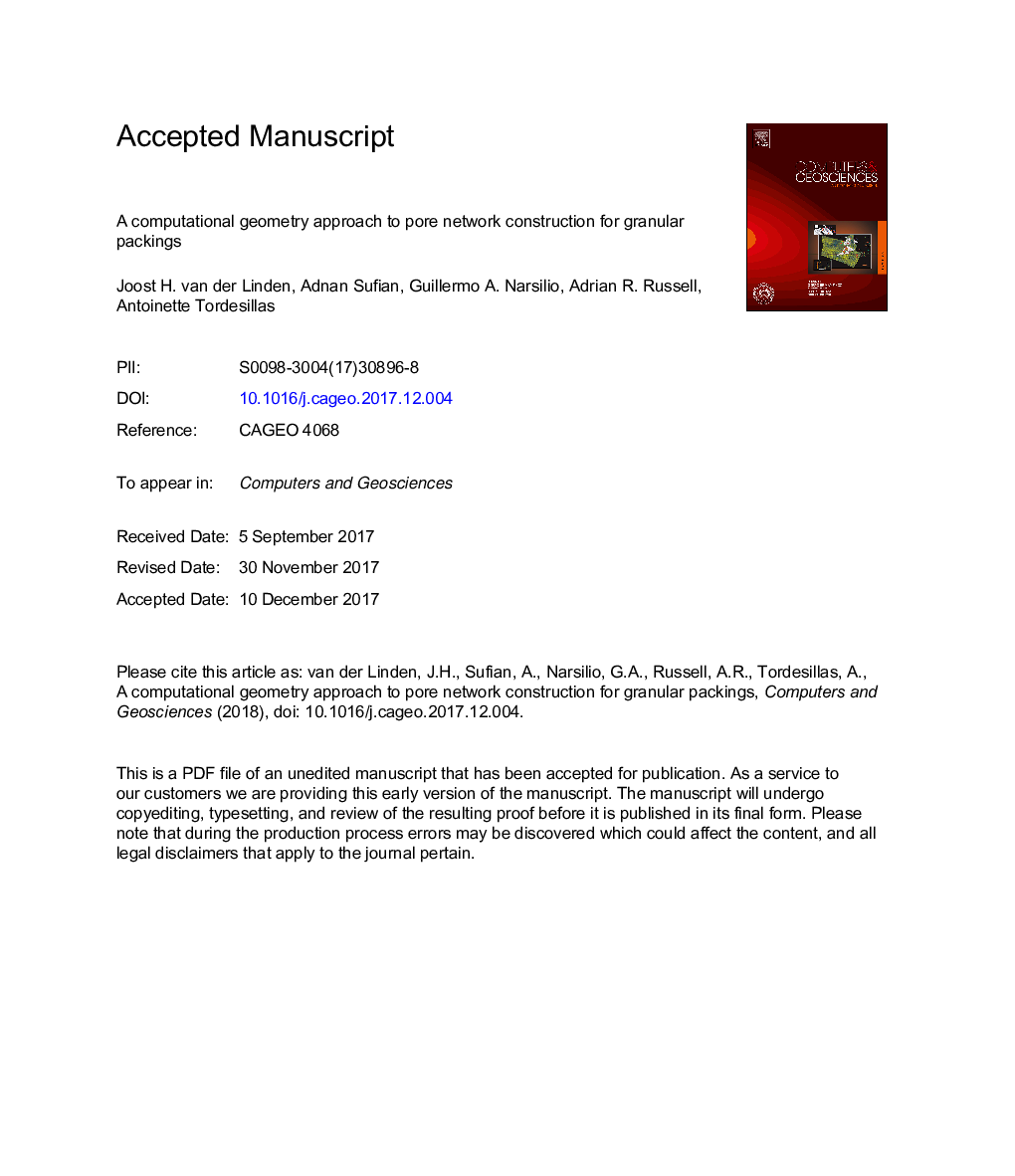| Article ID | Journal | Published Year | Pages | File Type |
|---|---|---|---|---|
| 6922206 | Computers & Geosciences | 2018 | 36 Pages |
Abstract
Pore network construction provides the ability to characterize and study the pore space of inhomogeneous and geometrically complex granular media in a range of scientific and engineering applications. Various approaches to the construction have been proposed, however subtle implementational details are frequently omitted, open access to source code is limited, and few studies compare multiple algorithms in the context of a specific application. This study presents, in detail, a new pore network construction algorithm, and provides a comprehensive comparison with two other, well-established Delaunay triangulation-based pore network construction methods. Source code is provided to encourage further development. The proposed algorithm avoids the expensive non-linear optimization procedure in existing Delaunay approaches, and is robust in the presence of polydispersity. Algorithms are compared in terms of structural, geometrical and advanced connectivity parameters, focusing on the application of fluid flow characteristics. Sensitivity of the various networks to permeability is assessed through network (Stokes) simulations and finite-element (Navier-Stokes) simulations. Results highlight strong dependencies of pore volume, pore connectivity, throat geometry and fluid conductance on the degree of tetrahedra merging and the specific characteristics of the throats targeted by the merging algorithm. The paper concludes with practical recommendations on the applicability of the three investigated algorithms.
Related Topics
Physical Sciences and Engineering
Computer Science
Computer Science Applications
Authors
Joost H. van der Linden, Adnan Sufian, Guillermo A. Narsilio, Adrian R. Russell, Antoinette Tordesillas,
